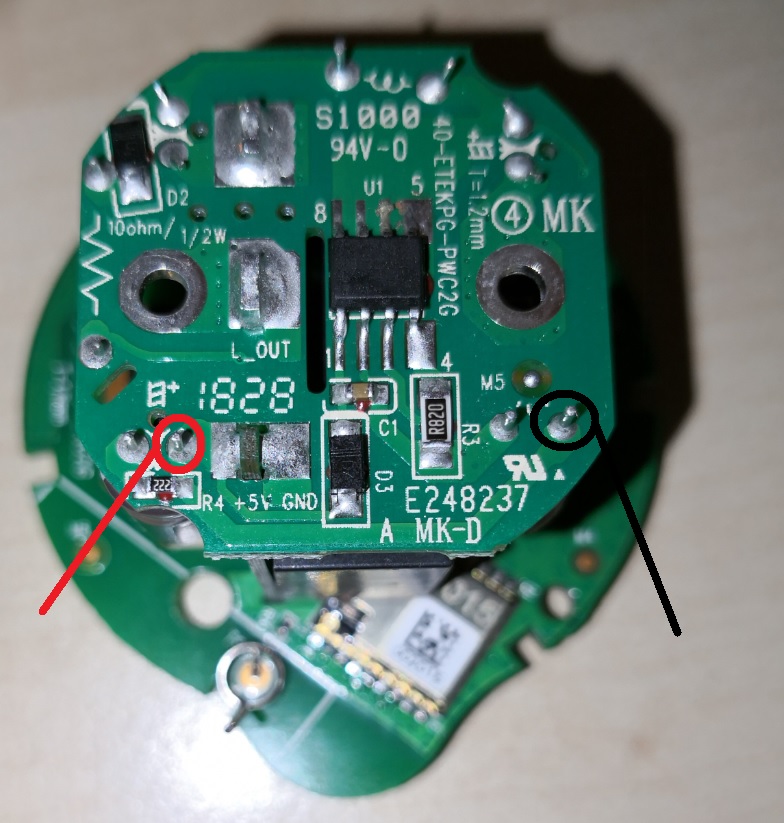Etekcity Voltson ESW01-EU
Flashing
To reach the ESP pins, you need to open the device by unscrewing two (really) small Torx on the front and get the board
out with four Philipps screws.
Then, all necessary pads for flashing are accessible. Attach 5V and GND at the bottom, preferably with test hooks.
 For flashing, T12 is TX and T13 is RX. During boot, T11 and T16 pads need to be connected to GND. Easiest is to connect
these pads with pogo pins.
For flashing, T12 is TX and T13 is RX. During boot, T11 and T16 pads need to be connected to GND. Easiest is to connect
these pads with pogo pins.

GPIO Pinout
| Pin | Function |
|---|---|
| GPIO4 | Relay |
| GPIO5 | LED blue |
| GPIO12 | HLWBL CF1 Pin |
| GPIO13 | HLW8012 CF Pin |
| GPIO14 | Button |
| GPIO16 | LED yellow |
The HLW8012 SEL pin is permanently pulled high, so you can only read power and voltage. With a small calculation trick
you can get current values though (see current_calculated below).
Basic Configuration
esphome:
arduino_version: 2.5.1
esp8266:
board: esp01_1m
wifi:
ssid: !secret wifi_ssid
password: !secret wifi_password
status_led:
pin:
number: GPIO5
output:
- platform: gpio
id: led1
pin: GPIO16
switch:
- platform: gpio
name: "Relay"
id: switch1
pin: GPIO4
restore_mode: RESTORE_DEFAULT_ON
on_turn_on:
- output.turn_on: led1
on_turn_off:
- output.turn_off: led1
binary_sensor:
- platform: gpio
id: button1
pin:
number: GPIO14
mode: INPUT_PULLUP
inverted: true
on_press:
- switch.toggle: switch1
sensor:
- platform: hlw8012
sel_pin: 0 # not connected
cf_pin: GPIO13
cf1_pin: GPIO12
voltage:
id: voltage
name: Voltage
power:
id: wattage
name: Wattage
on_value:
- sensor.template.publish:
id: hlw8012_current_calculated
state: !lambda 'return id(hlw8012_power).state / id(hlw8012_voltage).state;'
update_interval: 10s
initial_mode: VOLTAGE
change_mode_every: 4294967295 # basically never
- platform: template #disabled
id: current_calculated
name: "Current (calculated)"